Rehabilitation of the Palace of San Telmo
The Palace of San Telmo, outside of the historical city centre and integrated into the landscape of the Guadalquivir river, constitutes one of the most outstanding civil buildings of Spanish baroque architecture. Constructed between 1682 and 1796 for the Nautical University, it was transformed in the second half of the XIXth century into the residence of the dukes of Montpensier. Transferred to the Church for use as a Metropolitan Seminary, it has been in use until the final years of the XXth century. This period has been considered the most harmful to the heritage of San Telmo; it entailed not only demolition of the interior but the transformation of the buildings formal configuration and tipology. In 1989 it was acquired by the regional government of Andalusia for its Presidential seat.
The recuperation of San Telmo, offers an intervention that, for the first time in its history, encompasses the totality of the building. The intervention is therefore a complex process of summation and superimposition, of acts of restoration, rehabilitation, reconstruction and new construction. It is a proposal based on the desire to formulate an architecture that serves the building. An architecture that corresponds with that other tradition of modernity, that which does not imply discontinuity or rupture (and of course not historicist mimetism), in which a certain interaction takes place between the innovative languages of modernity and the consolidation of historical languages, so that a resonance occurs and complementary languages develop, achieving together a physical and historical continuity.
Our proposal assumes the demolition of the interior the entire building with the exception of the spaces linked to the principal facade, the central patio and the chapel, maintaining only the perimeter walls, introducing a new architecture that recovers the historical memory of the original founding building and establishes analogical relations with the baroque core. Spaces of memory are combined and intermixed in a continuum with the new contemporary spaces, demonstrating that the building can grow and transform without renouncing either the past or future. The choice of materials responds to this design position; marbles and local travertines, brass and stainless steel carpentry and tropical woods follow the lead of the existing materials and also of the rational criteria of sustainability.
The presence of the large central void, which was formerly the gardens of San Telmo, suggested the idea of conceiving the intervention as a series of gardens within a garden. The set of operations is structured proposing various enclosures, organised by a central architectural element formed by the pools and these enclosures, which are sunken slightly, evoking the Hispanic-Muslim tradition. The proposal includes the installation of a drainage system that reincorporates all of the rain water from the site into the water table, using this water for irrigation. Rain water is collected in the central pond from where a gravity-fed system irrigates the garden. Large masses of vegetation characterized by a diversity which provides a system of defence against external pathologies- interlace, creating an ambience of a paradisiacal garden.

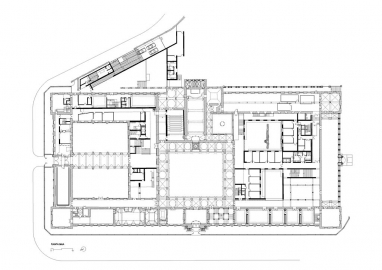
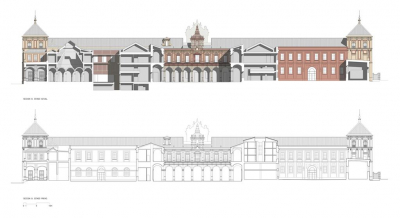
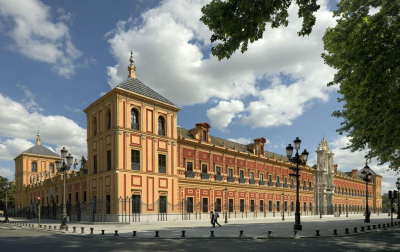
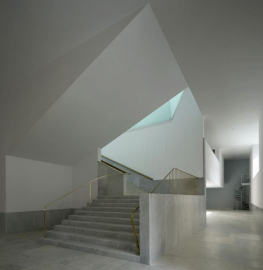
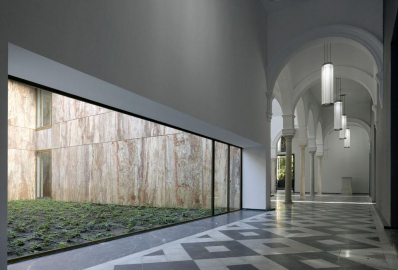
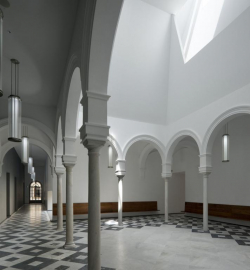
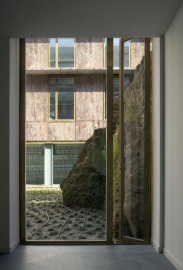
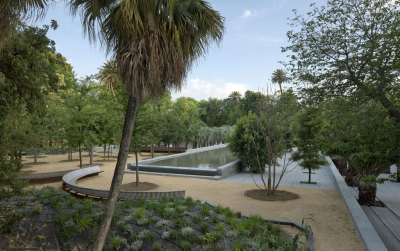
 copy.jpg)